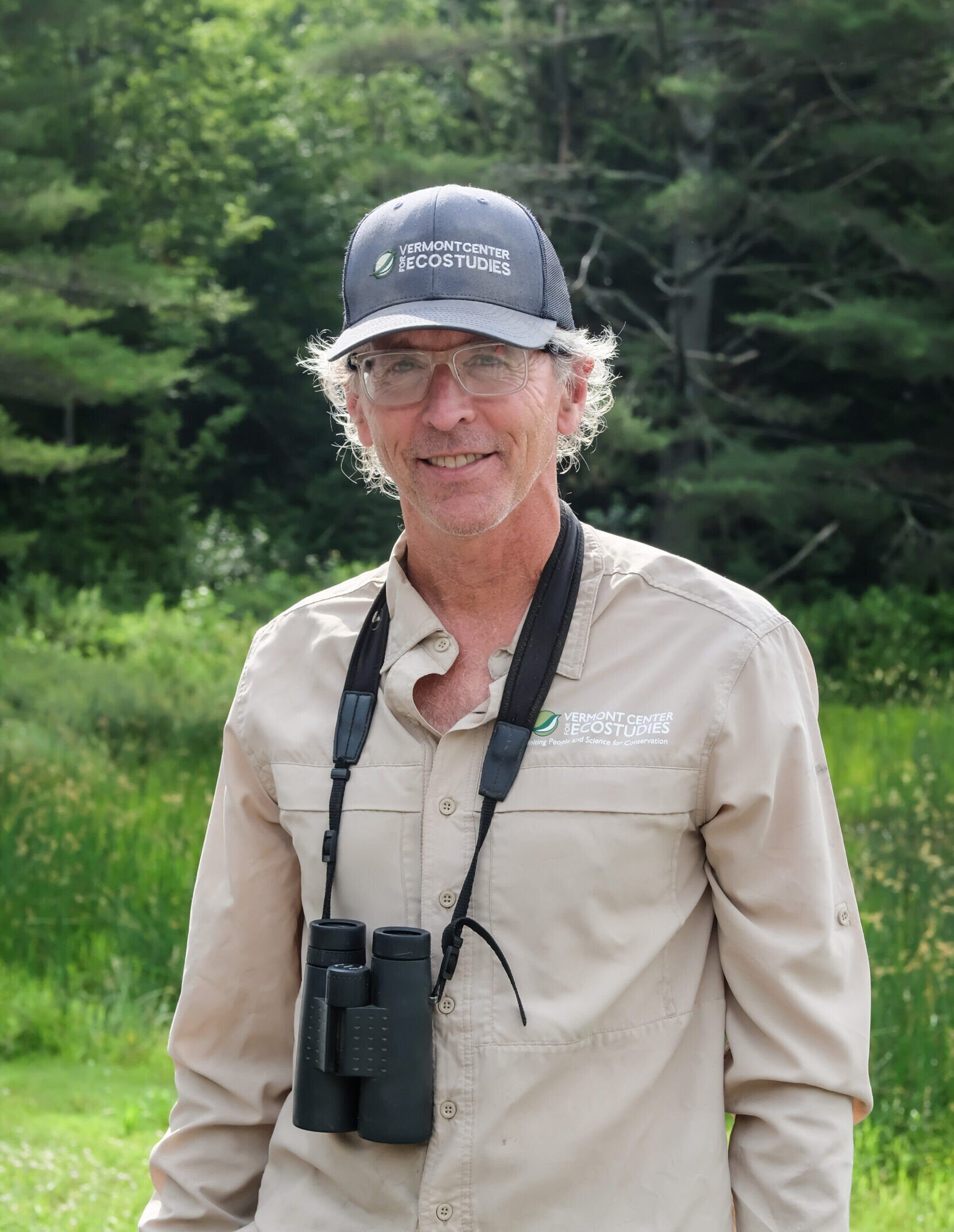
Since 1998, Eric has been the biologist for the Vermont Loon Conservation Project, a joint effort between VCE and the Vermont Fish and Wildlife Department. He has conducted research on the Common Loon since 1992. His early work in Michigan, Wisconsin, and Minnesota focused on basic biological questions: do loons mate for life, how old are loons when they first breed, what is happening when groups of loons gather, and are male and female roles in raising young similar? To begin answering these questions, Eric spent two years as part of a team capturing loons and placing color bands on their legs for identification purposes. When the loons were captured, blood and feather samples were also taken to determine if the birds were susceptible to environmental contaminants. Researchers have found that the loons in New England have some of the highest mercury levels in North America.
Eric has now shifted his focus to loon conservation, including educational programs, management efforts to promote breeding loons, and studies on potential threats to loons. In graduate school, he spent 3 years at the University of Minnesota setting up a volunteer-based monitoring program for Minnesota’s 12,000 loons. He now lives in northern Vermont with his son and wife and leads VCE’s Common Loon Research and Conservation projects. When not chasing loons or working with Vermont’s several hundred loon volunteers, he teaches courses on animal tracking, winter predators, hawks and owls, and the literature of conservation. In the winter months, he takes care of the cross country ski trails at the Craftsbury Outdoor Center and Highland Lodge. As a side interest, Eric and his wife spent 2 years working on sheep and cow dairy farms gaining an understanding of how all parts of life are deeply interconnected- people, food and sustenance, wildlife, farmland, forests, lakes, ponds, and loons.
Eric has a B.S. in Biology – Environmental Science from Colby College, Waterville, ME and an M.S. in Conservation Biology from the University of Minnesota. He is adjunct faculty at Sterling College.
